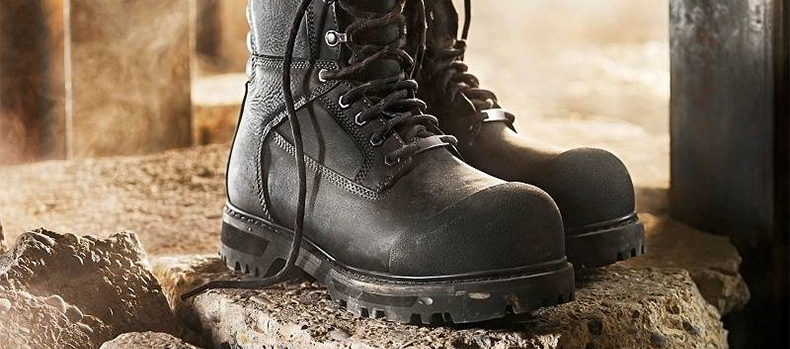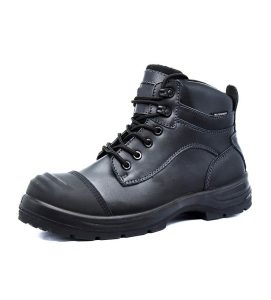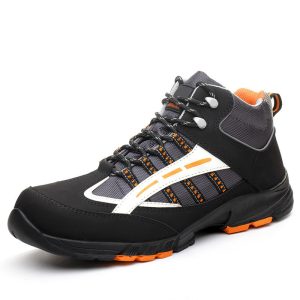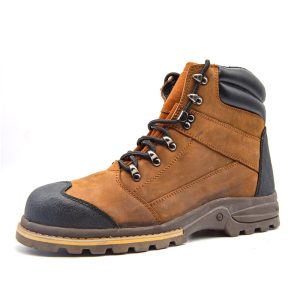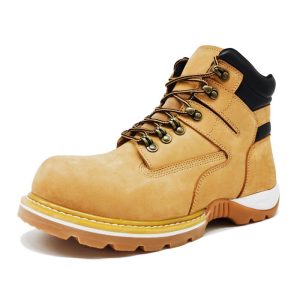How to clean all style safety shoes
We all know that according to the performance of , the materials and processes of making labor insurance shoes are also very different. The upper is made of leather, fabric, suede and suede, etc., while the sole is made of rubber, polyester fiber and other materials. Therefore, pay more attention when cleaning labor insurance shoes and choose the correct cleaning method.
Work boots or safety shoes are an important part of personal protective equipment used in the workplace to reduce physical hazards. Safety shoes are used to protect our feet, while maintaining and cleaning them is essential to keep them healthy and safe. It is important to clean and monitor safety shoes to avoid reducing their effectiveness in protecting the foot. Here are the best ways to clean your shoes based on the type of material you’re using.
leather
Leather is one of the most commonly used materials for the exterior of safety shoes. The reason for using leather in safety shoes is its high resistance to abrasion and tearing, as well as the flexibility of movement it exhibits during heavy work. The natural leather also wicks moisture to keep feet dry and comfortable throughout the day.
The first step in caring for leather shoes is to make sure they are completely dry. Then you need to use a shoe brush to remove dust, salt and other sticky substances on its surface. The next step is to apply the appropriate wax or leather material and rub it on the shoe with a soft cloth. Continue doing this until the wax has reached the entire surface of the shoe and the stain has disappeared from the surface of the shoe. The shoes are then exposed to air to dry. To keep the leather shiny, you can use a palmitoleic acid-based wax like mink oil, which has similar properties to petroleum jelly. Finally, a waterproofing spray is recommended to protect safety shoes from snow and rain and help them resist water penetration.
To remove oil and protein stains such as blood or urea stains, gently wipe the area with a cloth dampened with a solution of water, mild soap, and a very small amount of vinegar. It is important to note that in this case dry the leather shoes and do not expose them to direct sunlight and heat.
Synthetic material
Synthetic materials are also used in the production of safety shoes, made from man-made rather than natural materials. Synthetics can be treated to resist stains, wrinkle, improve water resistance and more, but how should they be cleaned?
We recommend using a soft brush or soft cloth to remove stains and contaminants from the surface of the synthetic leather. Then wash the synthetic leather safety shoes with a mild soap solution and cold water. After cleaning, let the synthetic shoes dry and expose the safety shoes to the air, the heat will have a positive effect on the synthetic leather structure.
Suede leather
Suede is a type of leather with a matte surface and a special finish. Suede is generally softer and less strong and durable than regular leather. Due to the low resistance of suede, it is more sensitive to maintenance.
To start cleaning and maintaining your suede, use a suede shoe brush to remove all dirt and salt. Then apply a dilute solution of sodium bicarbonate (also known as baking soda) to the remaining stain and the entire surface of the suede, allowing it to absorb the sunscreen over the course of a day. Then clean the safety shoes with a cloth to remove the baking soda from the surface of the shoes. Finally, make your suede safety shoes more water and weather resistant with a special water repellent spray. Oils such as shine sprays and paraffin cannot be used to maintain the beauty and appearance of suede.
Rubber material
Rubber is another material commonly used in the manufacture of safety shoes. Rubber is an excellent insulator, giving the shoe its electrical resistance and shock-absorbing properties. While rubber is highly durable, it’s not breathable and can restrict shoe movement and cause discomfort. However, the rubber is waterproof, allowing people to work in wet conditions and keep their feet dry during the day. Safety shoes made of rubber are easier to clean.
Use high-pressure water to wash the galoshes, and use a baking soda solution to remove dirt. The pressure of the water will clean dirt and other materials, and the baking soda will remove lingering stains from safety shoes made of rubber. Care should be taken to ensure that no water enters the shoes. Water seeping into the shoe can damage the inside of the shoe. After removing dust and stains from the plastic, use a stiff-bristled brush to separate pebbles and sand from the soles. Scratches on plastic shoes can be removed with olive oil. Finally, expose the shoes to air to dry.
Advice
Before purchasing any type of safety footwear, it is best to check the conditions of the work environment and the place of use. It is not recommended to use suede or nubuck in oily, wet and muddy environments. In addition, since leather is a protein-based natural material, using leather safety shoes in an environment where enzymes and bacteria are likely to grow may damage the structure of the leather and should be carefully considered.
Given that most ark safety shoes are made of leather, if you want to use water to clean your work shoes or safety shoes, it is important to consider the amount of water you will be using for cleaning. Repeated soaking of leather in water can dry out and crack leather shoes. If you have to expose your shoes or safety shoes to too much water, remove the insoles and fill them with newspaper. During the time you are not wearing safety shoes, placing a newspaper inside your shoes will absorb water and humidity more quickly. Of course, the use of leather shoes in a humid environment and high humidity environment will reduce the service life of the leather shoes.




